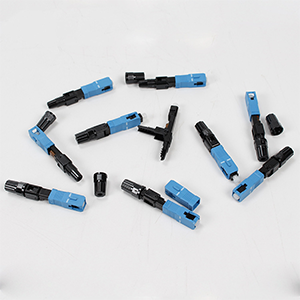As an important part of modern networks, SFP fiber optic modules play a key role in high-speed data transmission and reliable connections. This article will introduce the definition, working principle and supported transmission protocols of SFP fiber optic modules.
We will also explore the different types of SFP modules and their application areas, as well as comparisons with other fiber optic modules. In addition, we provide considerations for deploying and maintaining SFP fiber optic modules and look into its future development trends.
Introduction to SFP fiber optic module
-
Definition and characteristics:
SFP (Small Form-Factor Pluggable) fiber optic module is a miniaturized optical module that can be used in fiber optic communications and network equipment. It features hot-swappable capabilities, high-density cabling, and flexible interface options. -
SFP standard:
SFP fiber optic modules follow the MSA (Multi-Source Agreement) standard, ensuring the interoperability of SFP modules produced by different manufacturers. According to application needs, SFP modules can be divided into different types such as SFP, SFP+, QSFP, etc.
Working principle of SFP optical fiber module
-
Photoelectric conversion:
SFP fiber optic modules realize conversion between optical signals and electrical signals through photoelectric conversion. It uses a laser to convert electrical signals into optical signals and an optical receiver to convert optical signals into electrical signals. -
Transmission protocol:
SFP fiber optic modules support a variety of transmission protocols, including Ethernet, Fiber Channel, SONET/SDH, etc. This enables the SFP module to adapt to various network environments and application needs.
Types and applications of SFP fiber optic modules
-
Single-mode and multi-mode SFP:
Single-mode SFP is suitable for long-distance transmission, and multi-mode SFP is suitable for short-distance transmission. They vary in data transmission distance and transmission rate, choose the appropriate type based on your specific needs. -
Data center network:
SFP fiber optic modules are widely used in high-speed data center networks to support connections between servers, storage area networks, and interconnections between network devices. -
Long distance transmission:
SFP fiber optic modules play an important role in scenarios that require long-distance transmission, such as metropolitan area network connections, fiber optic backbone networks, and wide area networks.
Transmission performance of SFP optical fiber module
-
Transmission distance:
The transmission distance of SFP fiber optic module depends on the type of fiber and transmission rate. Generally, the transmission distance of single-mode SFP modules can reach tens of kilometers, while the transmission distance of multi-mode SFP modules is shorter. -
Transmission rate:
SFP fiber optic modules support different transmission rates, such as 1Gbps, 10Gbps and 25Gbps, etc. Based on network needs, select the appropriate transfer rate to meet performance requirements.
Comparison between SFP fiber optic modules and other fiber optic modules
-
Performance comparison:
Compared with other fiber optic modules (such as SFP+, QSFP), the transmission rate and port density of SFP fiber optic modules are lower. However, it has the advantages of wider application scenarios and high cost-effectiveness. -
Applicable scenarios:
In small network environments or scenarios that require lower transmission rates, SFP fiber optic modules are an economical choice. For large-scale data centers or high-speed network needs, other fiber optic modules may be more suitable.
Precautions for deployment and maintenance of SFP fiber optic modules
-
Installation and connection:
When installing an SFP fiber optic module correctly, follow the guidelines provided by the manufacturer to ensure that the module is aligned with the device interface and inserted into place. Use appropriate fiber optic connectors and fiber optic cables to ensure a stable connection. -
Maintenance and maintenance:
Clean SFP fiber optic modules and fiber optic connectors regularly to prevent dust and contaminants from affecting signal quality. Avoid excessive bending of fiber optic cables to protect fiber optic modules and cables from damage.
Conclusion:
As an efficient connection solution, SFP fiber optic modules provide flexibility and reliability for modern networks. Whether in data center networks or long-distance transmission, SFP fiber optic modules play an important role.
Although other higher performance fiber optic modules are available today, SFP fiber optic modules still have significant advantages in small network environments. As technology continues to evolve, we can look forward to the development and application prospects of SFP fiber optic modules in future fiber optic networks. Ensuring that SFP fiber optic modules are properly deployed and maintained will provide your network with reliable connectivity and excellent performance.


